CHILL image collection
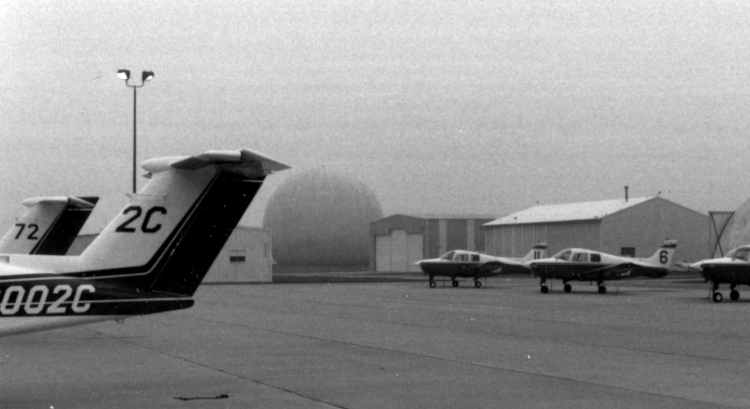
Fall 1989: The CHILL's home base site was located a short distance northeast of the parking ramp for the University of Illinois pilot training program at Willard Airport (KCMI).
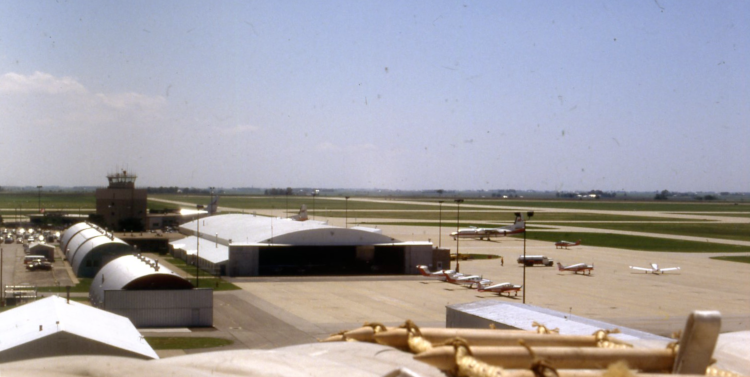
Spring 1989: View from the top of the radome looking in the opposite direction from the preceding picture (towards the southwest). The top of the dome was reached by climbing the rope ladder seen in the bottom of the picture.
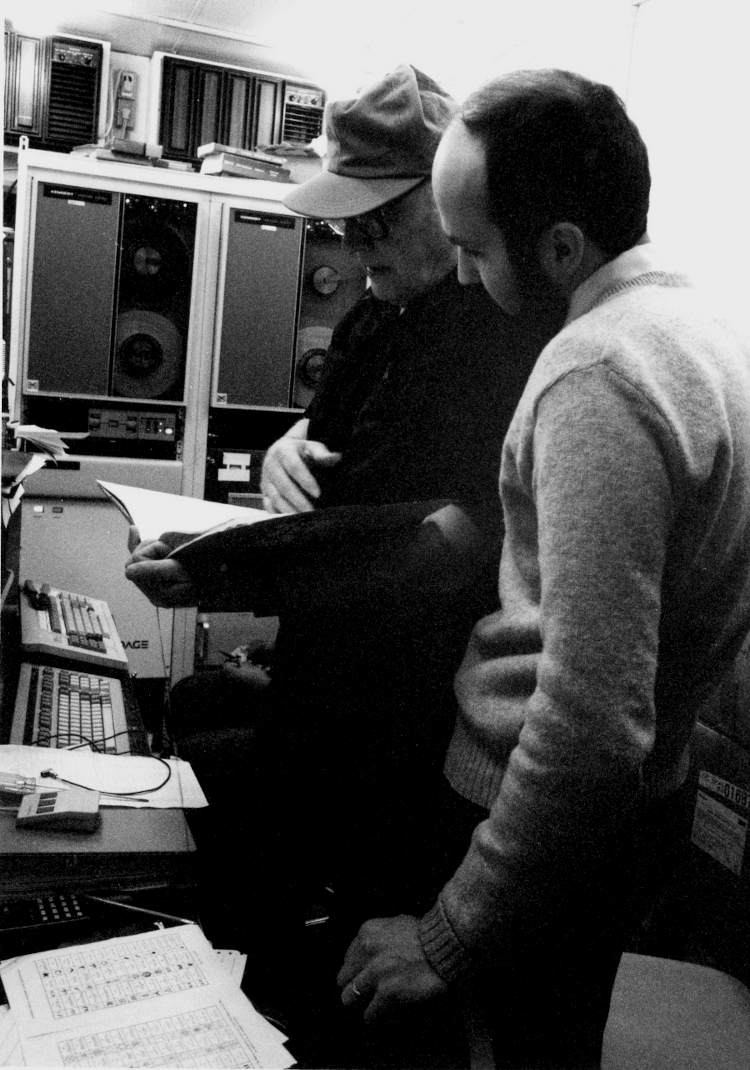
~1986 - 1987: Gene Mueller and Dave Brunkow, primary electrical engineering staff for the CHILL radar. This picture was taken in the technical operating area that was added to the rear of the FPS-18 van during the NSF-funded radar upgrade in the mid-1980's. (Photo credit: ISWS archives via Nancy Westcott and Steve Hilberg).
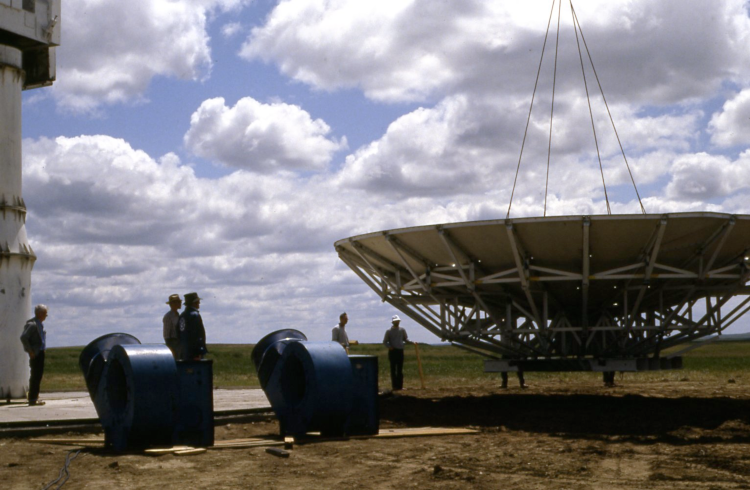
3 June 1987: Lifting the S-band reflector onto the pedestal at the Dickinson, North Dakota Municipal Airport (KDIK). This remote deployment project at Dickinson was the first utilization of the CHILL radar after its promotion to a base-funded NSF Facility.
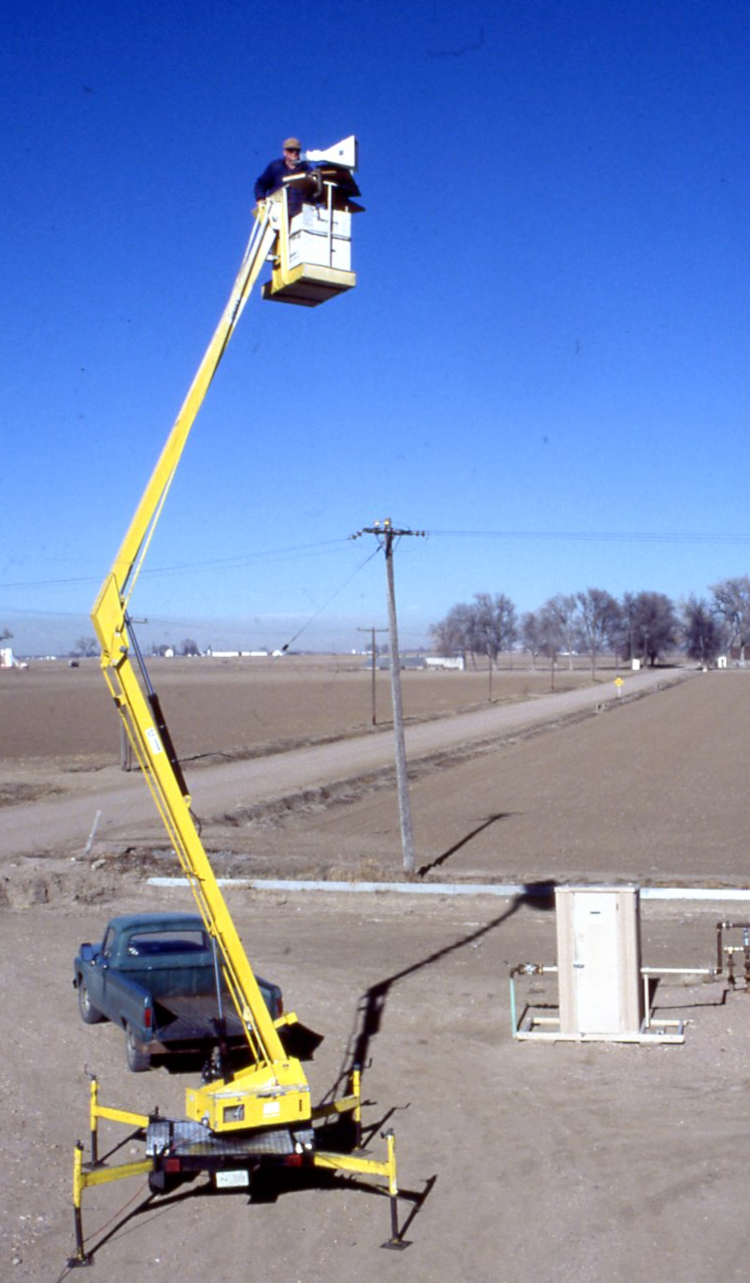
11 December 1990: To remove the feed horn support struts from the H and V polarization planes, the CHILL antenna was rotated 45 degrees when the radar was transferred to CSU. Pattern measurements were undertaken to evaluate the effects of the antenna rotation. For the initial pattern measurements, Gene Mueller is shown operating a signal generator connected to a standard gain horn in a rented lift.
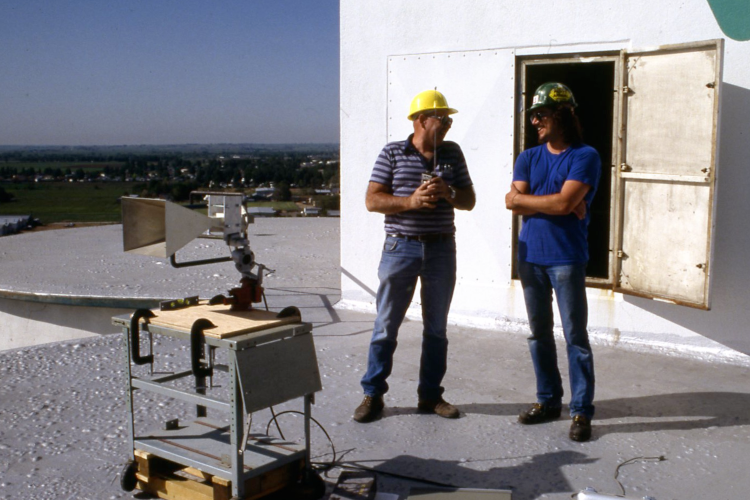
29 May 1991: The rented lift did not raise the signal source to a sufficient height with respect to the CHILL antenna. Subsequent pattern measurement experiments involved moving the signal generator and horn to the roof of a multi-story silo that was part of a sugar processing plant located ~3 km southwest of CHILL. In this picture CHILL technician Ken Pattison (left) is seen with Western Sugar employee Robert Schaeffer.
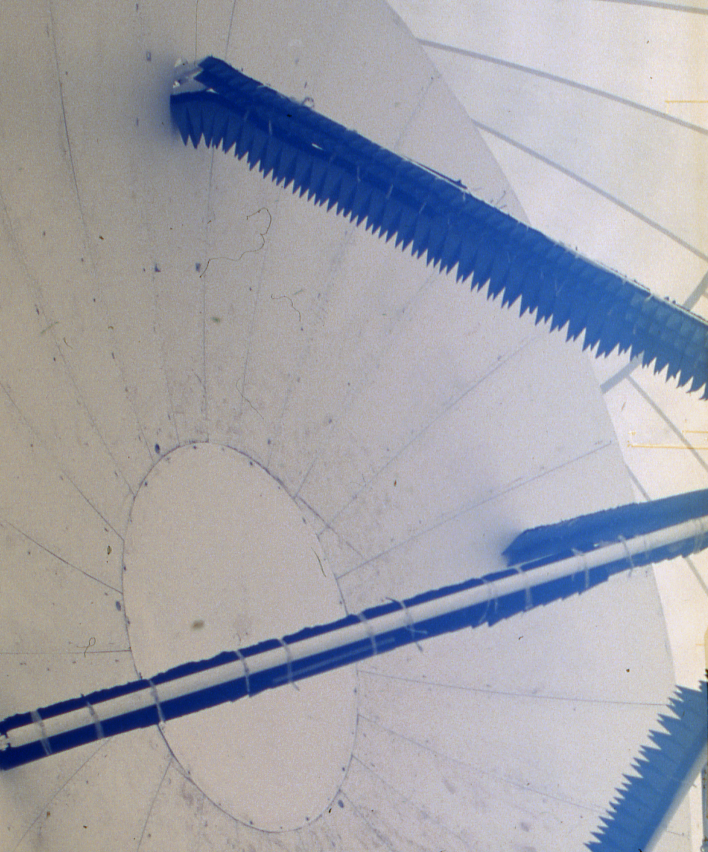
4 June 1991: Some of the pattern experiments involved applying microwave absorbing material to the feed struts. Antenna pattern sidelobe levels were not appreciably improved through the use of the absorber material.
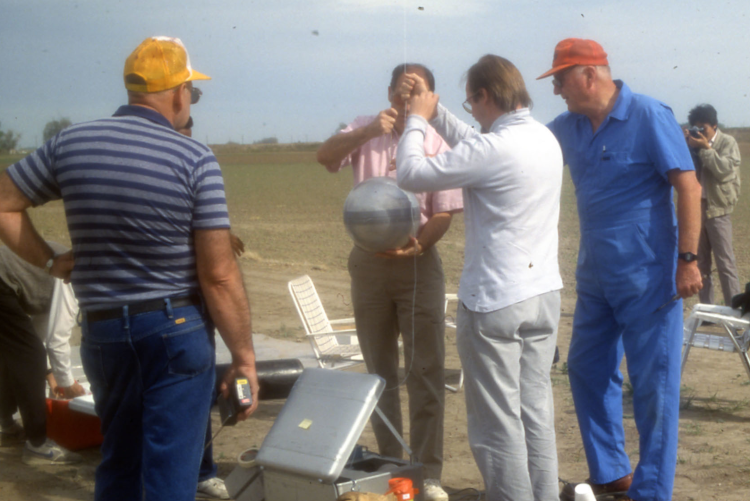
21 May 1991: In addition to pattern measurements, sphere calibrations of the radar were also done when CHILL operations began at CSU. The initial calibrations used a metal sphere target suspended from a tethered balloon. The sphere is being connected to the tether line in this picture. Seen from left to right are: Ken Pattison (yellow hat), Tom Mckee (mostly hidden and holding the sphere), Jon Kleist (white shirt) and Gene Mueller (blue coveralls).
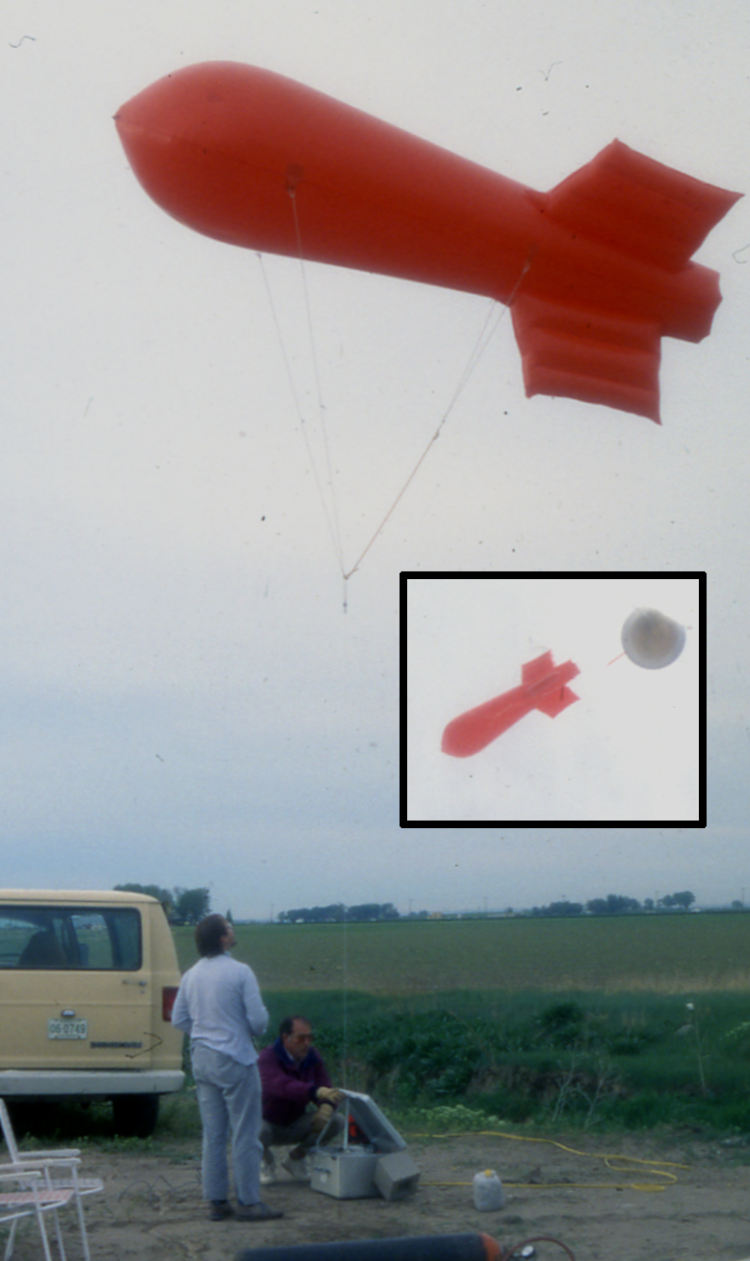
21 May 1991: Calibration sphere in flight. The tail fin-equipped balloon provides greater flight stability under breezy conditions. Tom McKee and Jon Kliest are operating the winch.
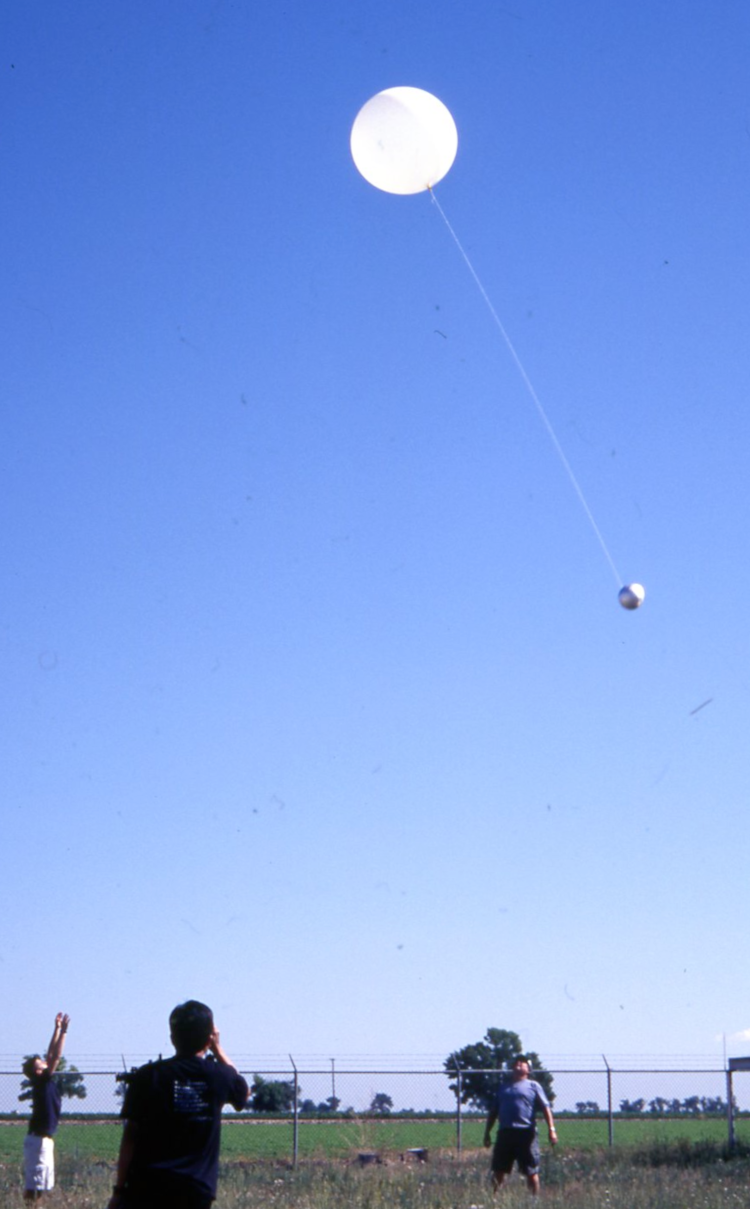
26 June 2003: Runway expansions at the Greeley Weld County airport located next to the CSU-CHILL site caused increased complications in getting FAA permission to conduct tethered balloons near the radar. This motivated the transition to the use of free-flying balloons carrying expendable, low mass, foil covered styrofoam ball targets for the sphere calibrations. The calibration sphere flight shown here was conducted during the summer 2003 REU project. Starting in 2019, radar system gain calibrations were done using a metal sphere suspended from a hovering drone.
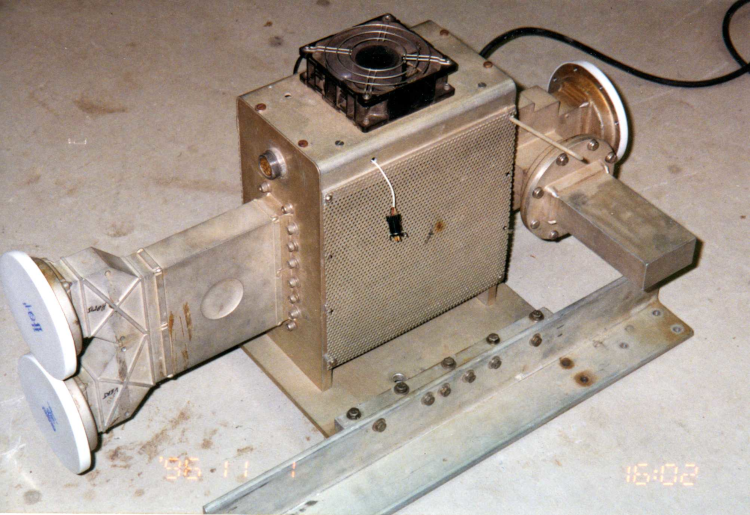
11 January 1996: The Raytheon switchable circulator was used on the CHILL radar between the summer of 1981 and late 1994. The transmitter / receiver hardware was connected to the single waveguide connection (with a white cover) on the right. In essence, reversing the sense of the magnetic field established by the ferrite material inside the switch shifted the microwave propagation path between the two waveguide connections on the left side of the switch.
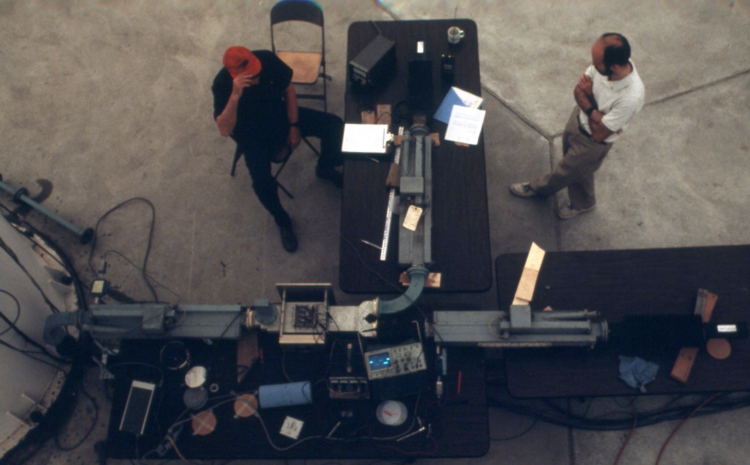
8 August 1991: The tuning of the drive pulses that changed the magnetization of the ferrite material in the Raytheon switch was critical to obtaining good polarization switch performance. This picture shows a tabletop switch test configuration that was temporarily set up on the floor of the radome. Various switch tuning procedures were tested using this arrangement; engineers from the NCAR CP-2 radar also participated in these tuning procedure tests. Gene Mueller (left) and Dave Brunkow (right) are seen in this picture.
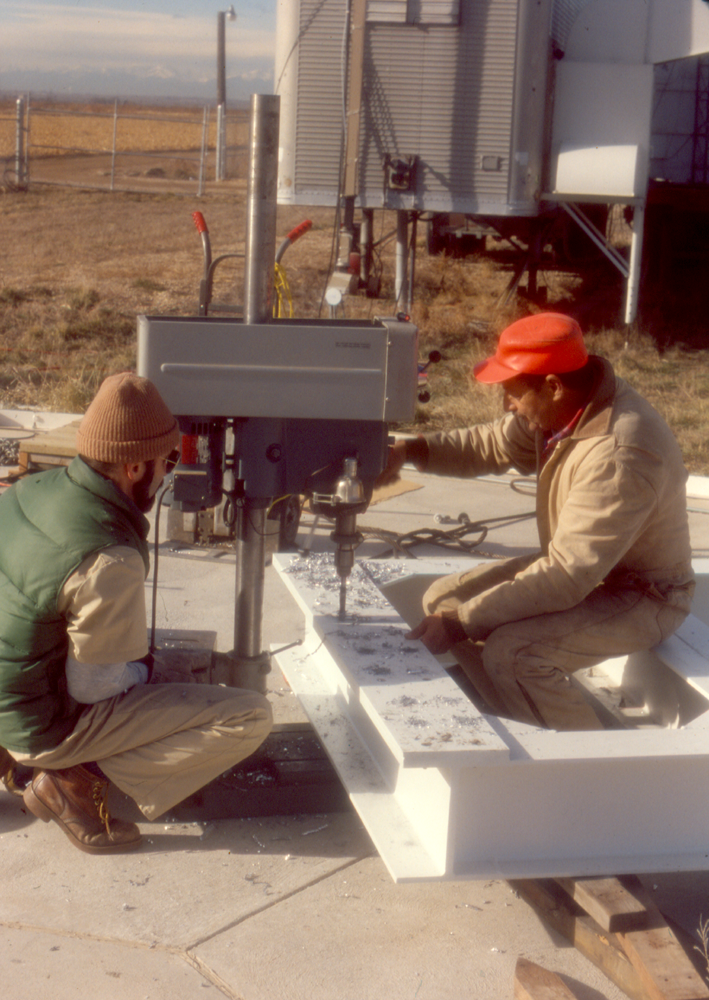
8 December 1993: The second generation center-fed CHILL antenna was delivered without holes drilled for the bolts that connected the adaptor plate antenna base to the counter weights on the positioner. (This manufacturing decision was made due to uncertainty regarding the locations of the holes in the counter weight faces.) Just prior to this picture, a crane had temporarily lifted the adaptor plate into place on the counter weight faces, allowing the existing bolt hole locations to be punch marked on the adaptor plate. In this picture, Charlie Wilkins (red hat), Atmospheric Science Department machinist, is drilling the holes for the antenna mounting bolts. Dave Brunkow (brown hat) monitors the process.
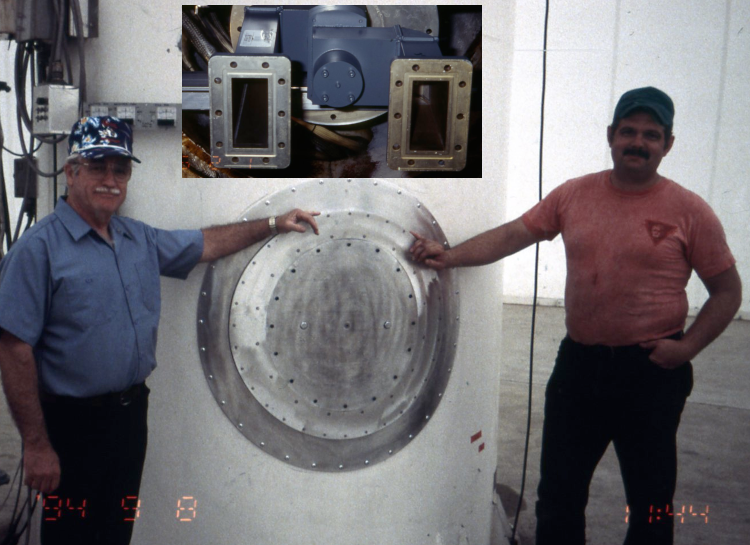
8 September 1994: The conversion of the CSU-CHILL radar to the two (separate H and V) transmitter configuration required the installation of a dual channel rotary waveguide joint inside the antenna pedestal on the azimuth rotation axis. This photograph shows the installation of the hatch that was necessary to gain access to the interior of the pedestal support tubes. The hatch and its surrounding reinforcement collar were fabricated at the NCAR shop. Page Baptist (left) and his assistant are shown after completing the hatch installation. The inset at the top of the picture shows the two waveguide connections at the bottom, fixed portion of the dual channel joint after it had been installed at the top of the pedestal tubes.
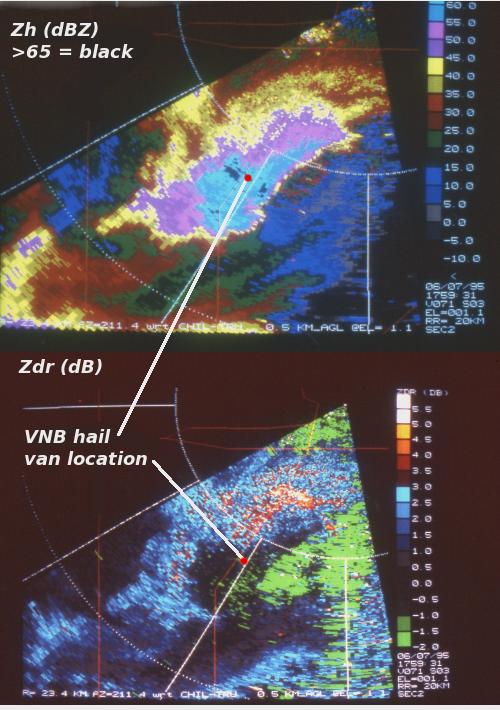
7 June 1995: Testing of the dual channel CSU-CHILL configuration started during the 1995 thunderstorm season. During this same period, Prof. Bringi operated a storm intercept van that was designed to collect time-resolved observations of hailstone size distributions. The two panels above show CHILL low elevation angle PPI data collected as a severe thunderstorm passed Bringi's van location.
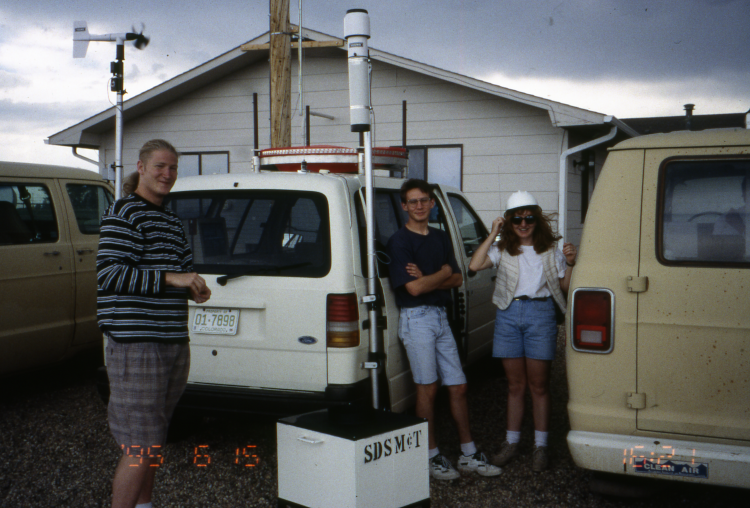
Bringi's hail intercept van is the white vehicle in the center of the picture. To collect hail, the circular ring assembly on the van roof was raised to stretch the attached fabric mesh into a funnel shape. The hailstones rolled down to the apex of the funnel and then descended through a pipe into the interior of the van. An aerovan and a recording rain gauge were mounted on the masts at the rear corners of the van. Charlie Wilkins performed all of equipment installation work on the van. Several REU students are included in the picture. They deployed the South Dakota School of Mines and Technology hail sensor (white box) from the van on the right side of the picture.
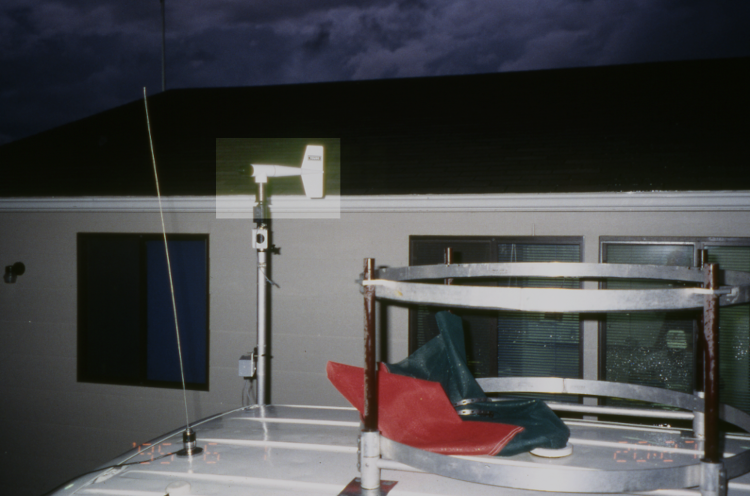
Side view of the hail intercept van after the storm encounter on the evening of 7 June 1995 (data shown above). The hail (up to golfball size) rate clogged the funnel outlet. The weight of the resultant ice accumulation partially tore the mesh fabric. Hail impacts also completely destroyed the aerovan propeller.
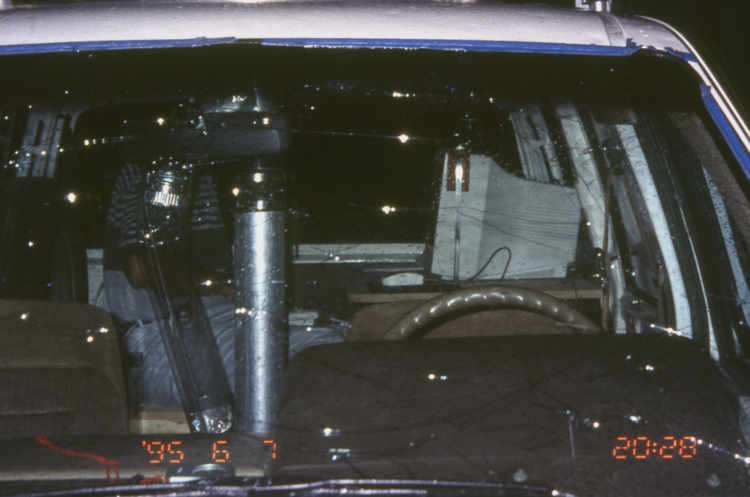
Front view of the van shows extensive windshield damage. Bringi is partially visible in the rear of the van sitting at the onboard PC.
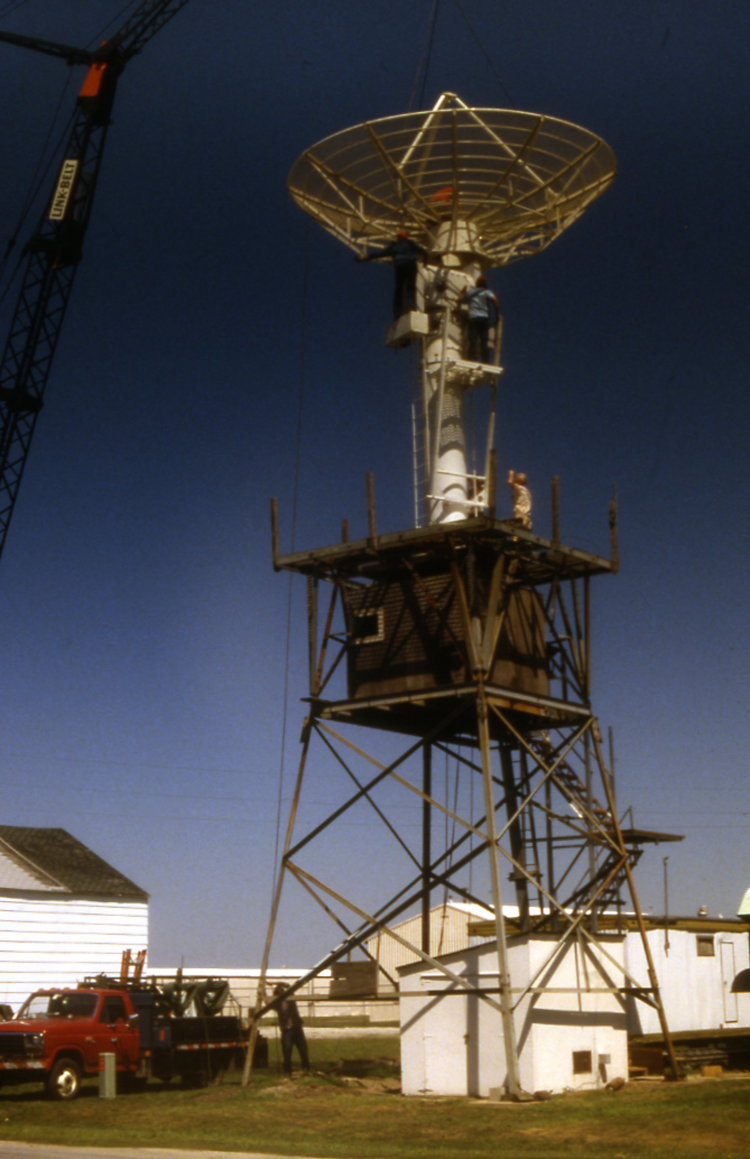
August 1988: In addition to the CHILL, ISWS operated the single polarization HOT (Hydrological Observational Tool) radar. The HOT also used an FPS-18 S-band transmitter and a Lassen SP20 signal processor that provided reflectivity and radial velocity data fields. This picture shows the final ISWS configuration of the HOT radar (tower mounting without a radome) as it was installed at the Champaign airport in the late 1980's.
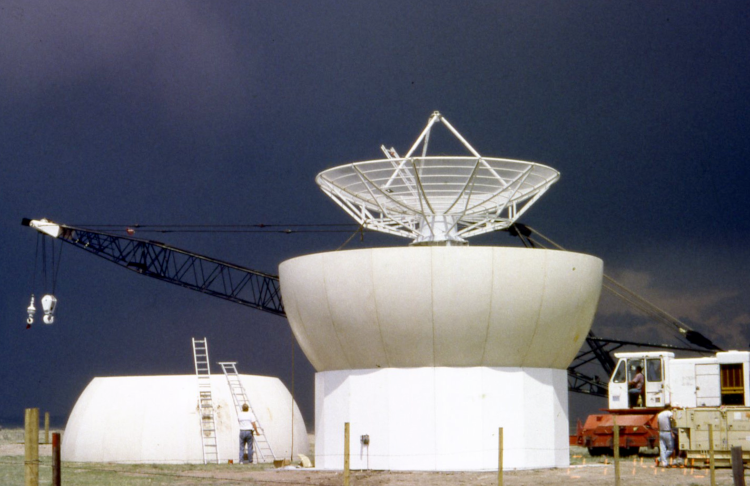
21 May 1998: When ISWS declared the HOT to be surplus equipment, the radar was disassembled and transported to Colorado to establish a dual-Dopper network with CSU-CHILL. The radar was renamed Pawnee in recognition of its new operating site next to the Pawnee National Grasslands. The photograph shows the radar's initial assembly in Colorado. (The rigid fiberglass dome and its multi-faceted wooden support base were also taken from the ISWS surplus materials.)
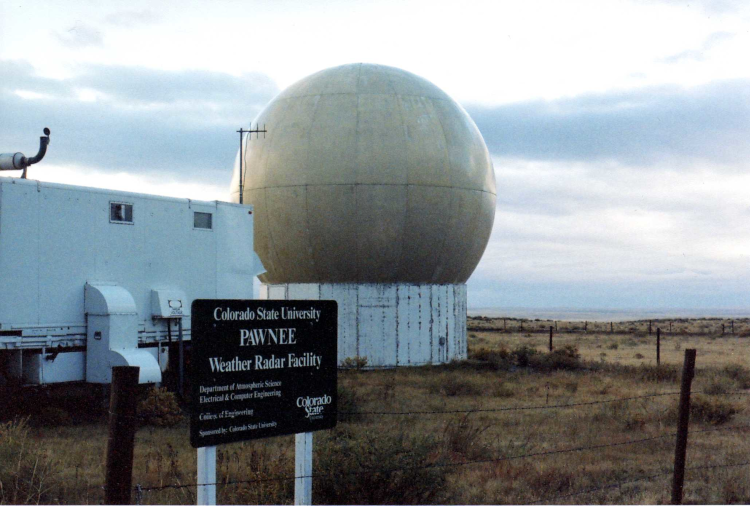
August 2006: Completed Pawnee radar installation. The Pawnee radar was disassembled and most of the equipment was scrapped in March, 2015 when the lease for the radar site was terminated.
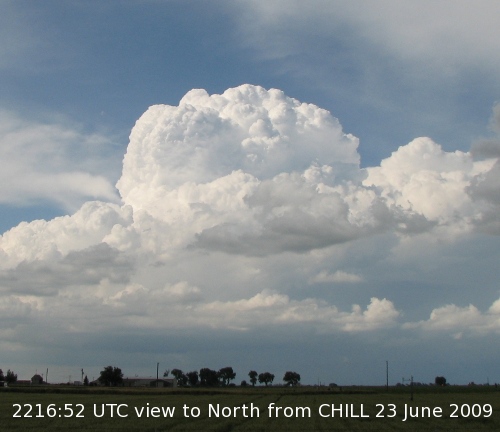
23 June 2009: By the thunderstorm season of 2009, operations of the CSU-CHILL radar with the new dual offset feed antenna had stabilized. (Initial test operations with the antenna began in late May, 2008). Sara Christensen, a summer 2009 REU student from Valparaiso University, did a project that combined convective cloud photography with dual polarization data collected with the offset feed antenna. This picture shows a developing thunderstorm that was one of Sara's target clouds.
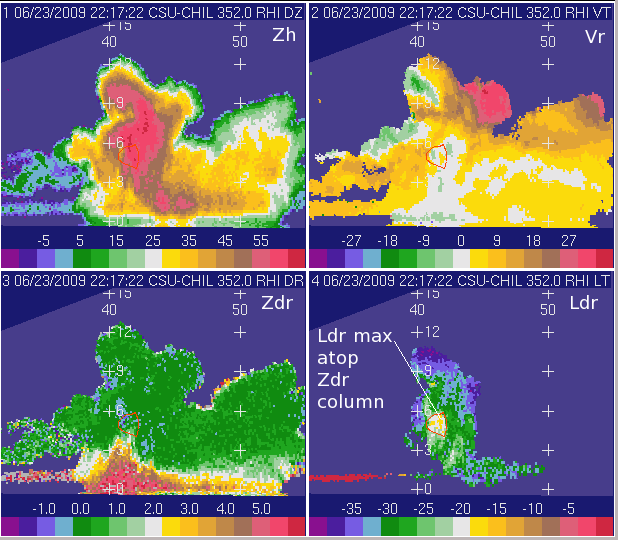
23 June 2009: Selected CSU-CHILL S-band data fields in an RHI scan taken through the developing CB shown above. The low sidelobe levels attained by the offset feed antenna provide a clear depiction of the positive Zdr column and related echo structures in the updraft region.
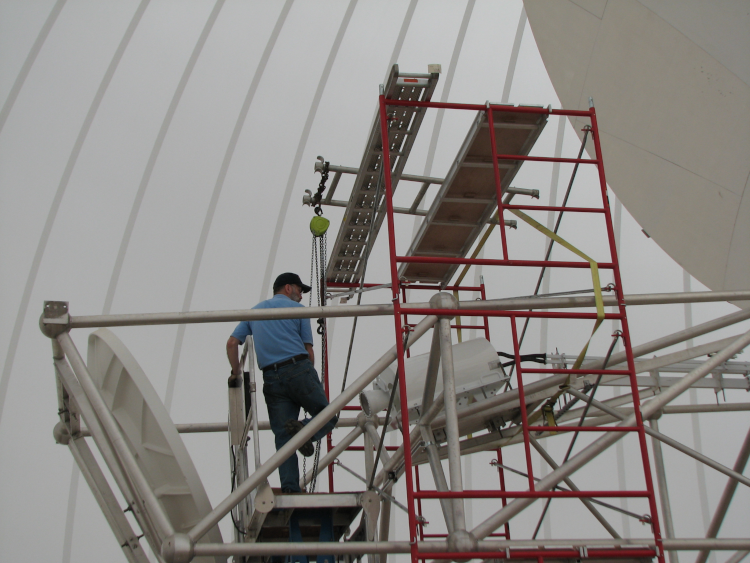
28 May 2013: In addition to excellent electrical performance, the mechanical design of the offset feed antenna allowed the feed horn to be changed in a single work day. In this picture, Dave Brunkow is seen preparing to remove the X-band only feed horn at the end of Matt Kumjian's FROST project.
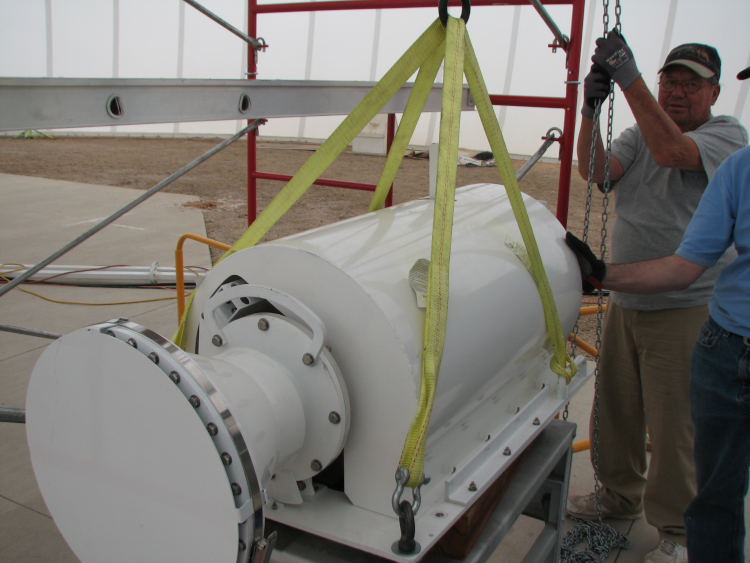
28 May 2013: Bob Bowie preparing to use the chain hoist to lift the dual wavelength (simultaneous 11 and 3 cm / S and X-band) horn into position.
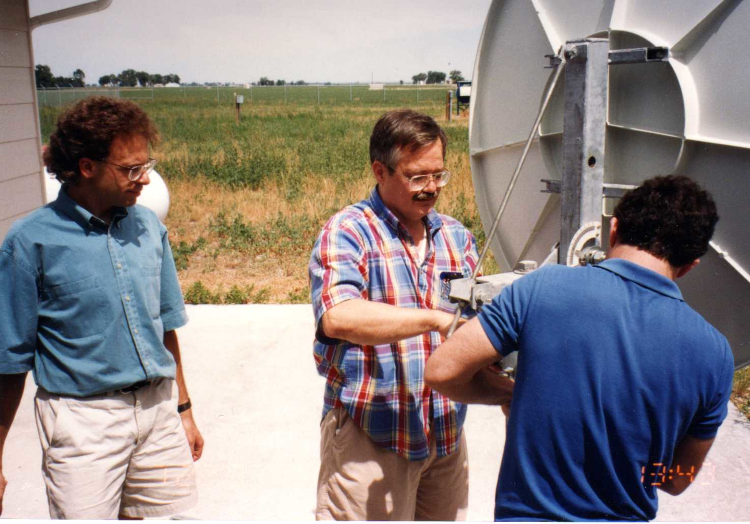
June 1993: Assembling an Advanced Communications Technology Satellite (ACTS) ground station at the CHILL site. In a study of precipitation effects on satellite links, CSU-CHILL data was collected when precipitation occurred in the ACTS beam path. ECE graduate students Joe Turk and John Beaver (back to camera) are seen at the left and right sides of the picture. (Central person in the checkered shirt is believed to be a visitor from NASA.)
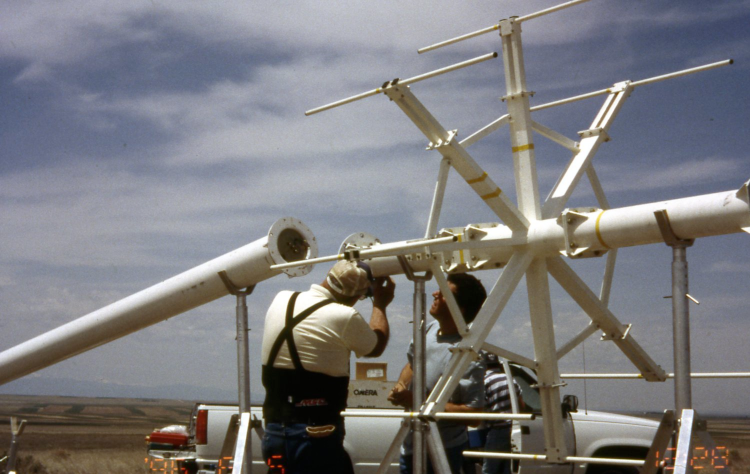
5 June 1996: Ken Pattison (wearing hat) assists with the assembly of a dipole array used in the ONERA VHF lightning interferometer system during the STREAO project. This ONERA station was located in a pasture near Briggsdale, Colorado. A second station was erected at the former NHRE headquarters near Grover. This ONERA system was designed to provide 3D lightning mapping. In later years, the New Mexico Tech Lightning Mapping Array (LMA) system provided lightning mapping in the general CHILL area.
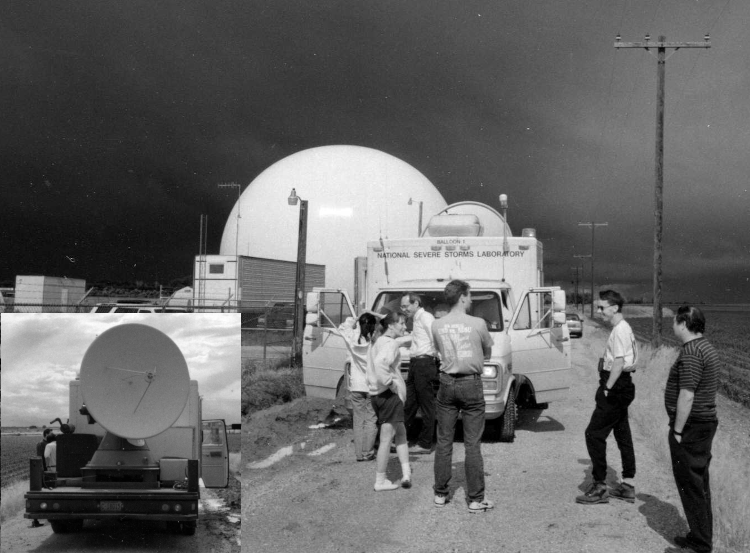
24 June 1995: Early edition Doppler on Wheels (DOW) radar visits the CHILL site during the 1995 VORTEX project. Over the years, many research radars (CASA IP1, NASA N-POL and D3R radars, etc.) came to the CHILL site for the collection of comparative data sets. CSU personnel seen in this picture (all facing to the left) from left to right are: Pat Kennedy, Jon Erdman (Atmospheric Science graduate student), and Bob Bowie. (Picture credit: Andy Detweiler, SDSMT).
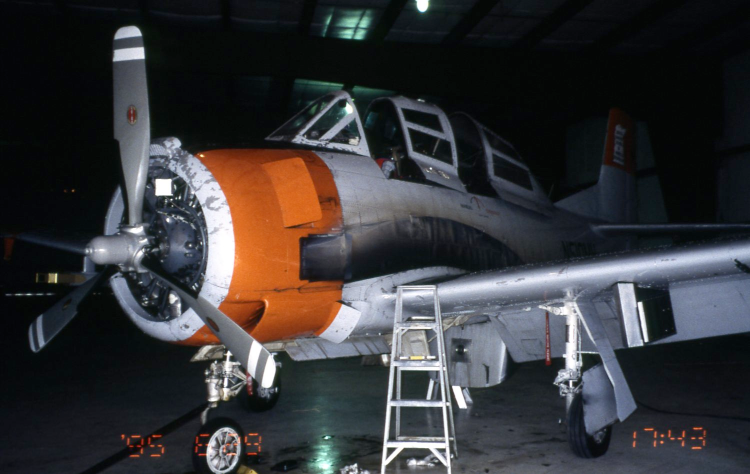
29 June 1995: A number of research aircraft operated in association with the CSU-CHILL radar. This photograph shows the armored T28 storm penetration aircraft operated by the South Dakota School of Mines and Technology. Combined T28 - CHILL operations took place on many occasions between the early 1970's in NHRE and 2003 in the Greeley area.
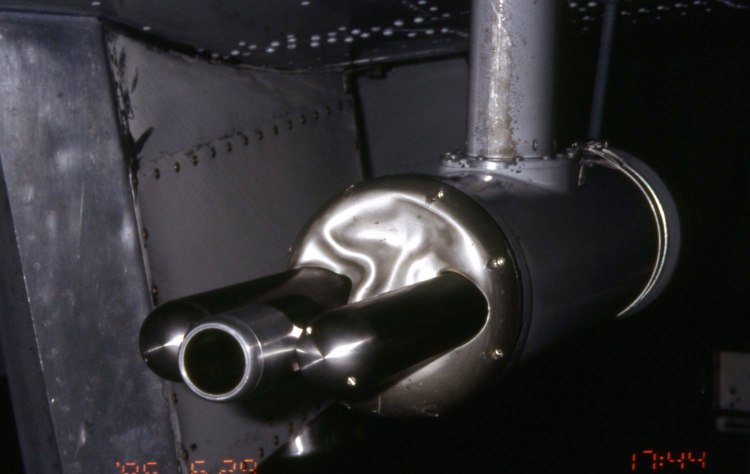
29 June 1995: Additional hail damage to the front hemisphere of the T28's FSSP optical probe was noted following a flight through a severe thunderstorm north of Greeley on 22 June 1995.
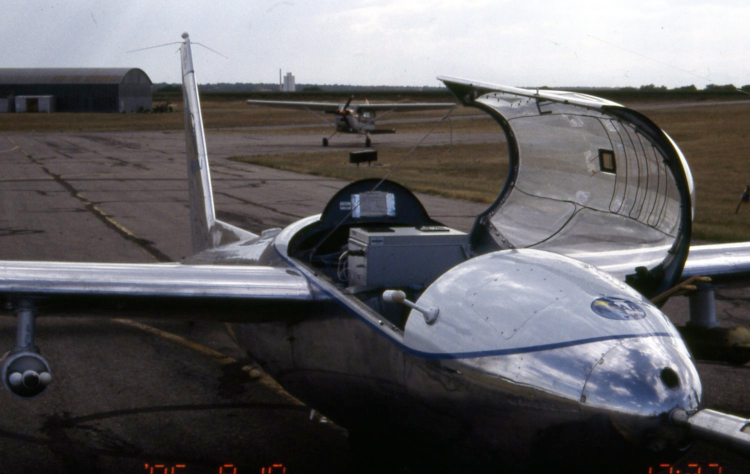
10 August 1995: The NCAR Explorer sailplane (N9929J) was another research aircraft whose origin dated back to NHRE. This photograph was taken when the aircraft landed at the Greeley - Weld County following a flight during a CHILL 20 hr project by conducted by Dan Breed of NCAR.
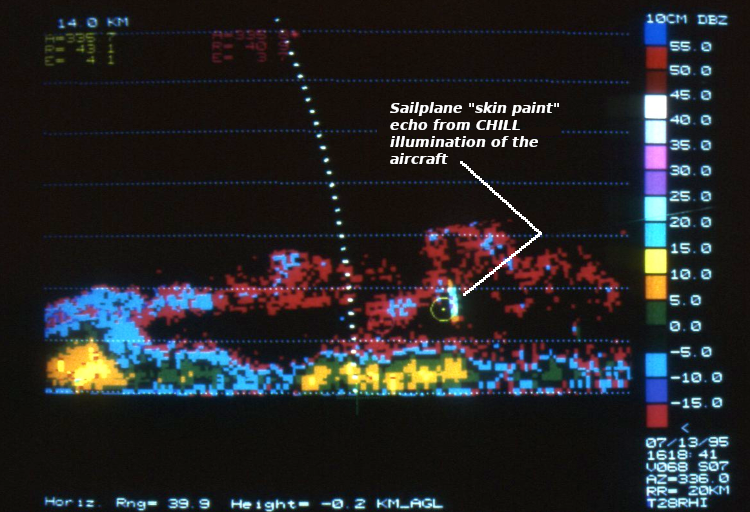
13 July 1995: CSU-CHILL RHI scan during a sailplane flight. The open yellow circle marks a recently-received GPS location transmitted by the sailplane telemetry system. Dave Brunkow modified the CHILL antenna control software to continually recenter the azimuth scan limits to follow the sailplane. The success of this procedure is confirmed by the CHILL's narrow pencil beam obtaining the marked "skin paint" echo from the sailplane. The Bragg scattering echo from the outline of the developing towering cumulus that the sailplane sampling is also visible.
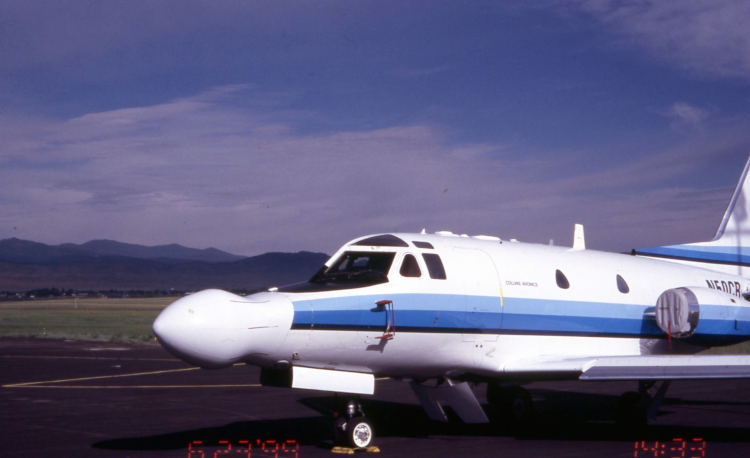
23 June 1999: Saberliner aircraft operated by Rockwell - Collins in 1999. A modified nose radome was installed to accommodate an antenna diameter typical of that used in airline-sized transport aircraft. This aircraft was participating in a test of turbulence detection algorithms as implemented in two commercially-produced airborne weather radar systems. (The other radar under test was from Allied Signal). Aircraft operations during the radar test program were directed from the CSU-CHILL radar.
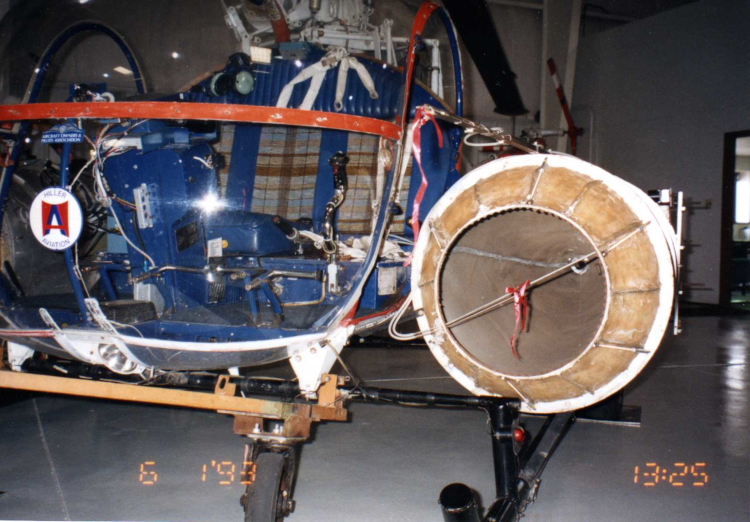
1 June 1993: In addition to various fixed-wing aircraft, helicopters (as well as UAV's / drones) have also been central elements in several CHILL radar projects. This helicopter was equipped with skid-mounted collectors that were designed to sweep up flying insects. The species of the collected insects were correlated with various clear air echo features detected by the radar.